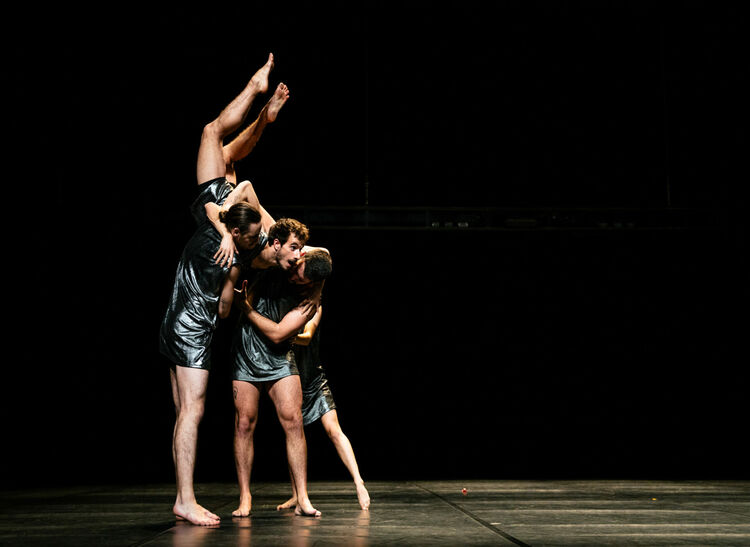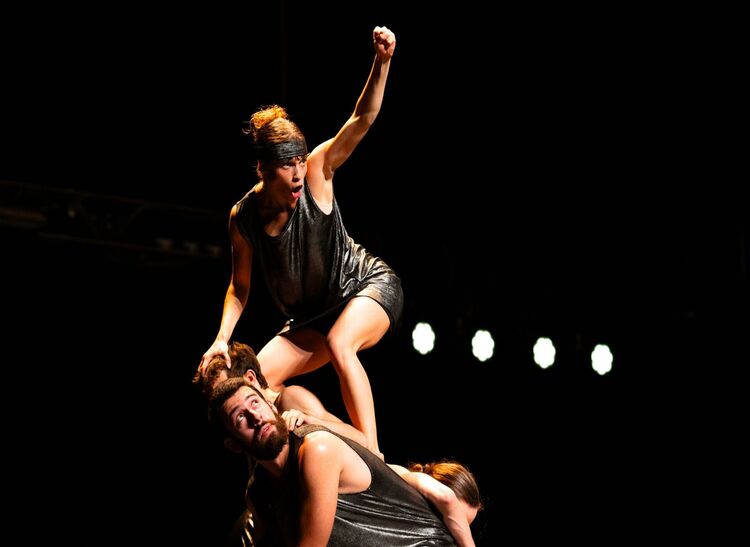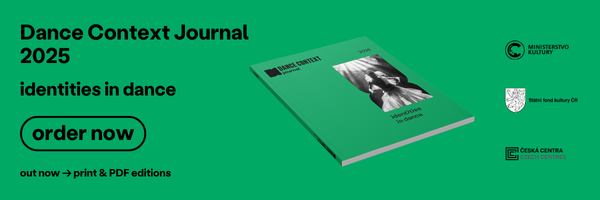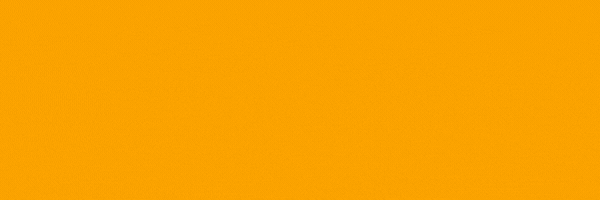A core element of Paulo Ribeiro’s choreography involved animating the works of two musical impressionists of the last century: Portuguese composer Luís de Freitas Branco and the French icon Maurice Ravel—after whom the production is named. Throughout the performance, one could see the effort to embody the music, mirroring its rhythm, dynamics, and melodic phrasing. In one moment, for example, a dancer’s arms shot forward in sync with the trumpet line. Ribeiro employed contemporary dance techniques with elements of contact, dynamic shifts, and strong involvement of facial grimaces and vocalization—adding theatrical flair to the movement vocabulary.
Maurice Accompagné neither offends nor delights. A clear dramaturgy eludes, yet the dancers vividly embody the music
In their hometown of Estoril, Portuguese Companhia Paulo Ribeiro presented an adaptation of Maurice Accompagné—the first part of a period-inspired trilogy of contemporary dance designed to guide audiences through the early 20th century (with following parts focusing on the 1960s and the present day). The five dancers strove to energize the atmosphere of an otherwise half-empty auditorium, but even after an hour-long performance, the room’s mood remained largely unstirred. My expectation of a dance-based retelling of the 20th century went unmet—yet the choreography offered several compelling moments.
Gradually from soloists to company
The performance opened with individual solos, each dancer showcasing distinct qualities. Thus, at least the introduction of Maurice Accompagné did not lack structure and a pleasant pace. Diogo M. Santos combined jumps, cartwheels, and inverted positions. Liliana Oliveira offered an expressive translation of the score into dance. Rodrigo Loureiro emphasized his range of motion. Francisco Ferreira amplified his solo with the sound of fringes from his costume. Finally, Marta Cardoso constructed original bodily tangles. These initial solos were engaging and carried a natural sense of rhythm and individuality. Predictably, they soon gave way to ensemble work, as the dancers merged into cohesive group phrases.
As the piece progressed, the performers—now dressed uniformly in short, dark costumes—created visually impressive compositions through fluid partnering and dynamic formations, at times resembling living figures. Particularly striking moments came when two dancers were lifted into the air. While not involving any major acrobatic stunts, the aerial elements still added a visually satisfying contrast.

Especially voice work and facial grimaces brought a theatrical dimension to the choreography: whispering, humming, singing and wordless articulations were indeed a diversion, adding texture—but also confusion. It was unclear whether to attach meaning to these expressions, whether to understand them or to perceive them only as an abstract soundscape. The vocal sequence eventually developed into unexpected laughter—perhaps intentional, perhaps spontaneous—but undeniably welcome, breaking the tension of a drawn-out passage. Another moment of levity came when the dancers limited movement to their eyes, creating a subtly ironic situation where only the pupils did all the moving, yet the group seemed dynamic.
What to look for in the choreography?
Before the final section, the dancers changed from monochrome outfits into more colourful, looser costumes. If one were to try to find a historical reference in this transformation, it might allude to the invention of colour television. Just as the previously mentioned in-flight positions could symbolize humanity’s first successful airplane flight in the early 20th century…
However, it was not clear what to look for in the choreography and it did not evolve even with the costume change. Familiar elements—stamping, clapping, body impulses, small steps, and arm extensions—recurred in the latter passage. Most of the movement remained grounded, confined to the dancers’ feet. The absence of floorwork, partnering, or elevated choreography made the piece feel static in its final stretch. Greater use of vertical space and group dynamics could surely have enhanced the overall effect.

In the end, all-too-important questions remain open to me. What was the piece trying to tell me? Was it a free-form evocation of the early 20th-century atmosphere through movement and sound? Or a more narrative reflection on social, technological, or cultural shifts? For me, the scenes never quite came together into a meaningful whole, falling short of my expectations for clear storytelling in period-inspired choreography. The glimpses of specificity raised more questions than they answered. Nevertheless, if the aim was “only” to tune the atmosphere, embody the music, or convey an abstract experience, perhaps I was mistaken in searching for a stronger dramaturgical thread.
In many ways, the choreography retained a sympathetic temperance. The performers demonstrated not only physical skill but also theatrical sensitivity, making the production multifaceted and quite complex. Yet I found myself wishing for a clearer dramaturgical structure—something to anchor the viewer and offer a deeper grasp of the themes explored through contemporary dance.
Written from a reprise on 22 June 2025, Academia de Artes do Estoril, Portugal.
Maurice Accompagné
Choreography: Paulo Ribeiro
Music Coordination: Luis Tinoco
Choreographer’s Assistant: Ana Moreno
Dancers: Diogo M. Santos, Francisco Ferreira, Liliana Oliveira, Marta Cardoso, Rodrigo Loureiro
Lighting Design: Nuno Meira
Costumes: José António Tenente
Music: Luís de Freitas Branco, Maurice Ravel
Production: Companhia Paulo Ribeiro
Co-Production 2024–2026: Centro Cultural de Belém, Teatro Nacional São João, Convento São Francisco, Festival de Danse de Cannes, São Luiz Teatro Municipal
World Premiere: 30 November 2024, Convento São Francisco, Coimbra, Portugal



